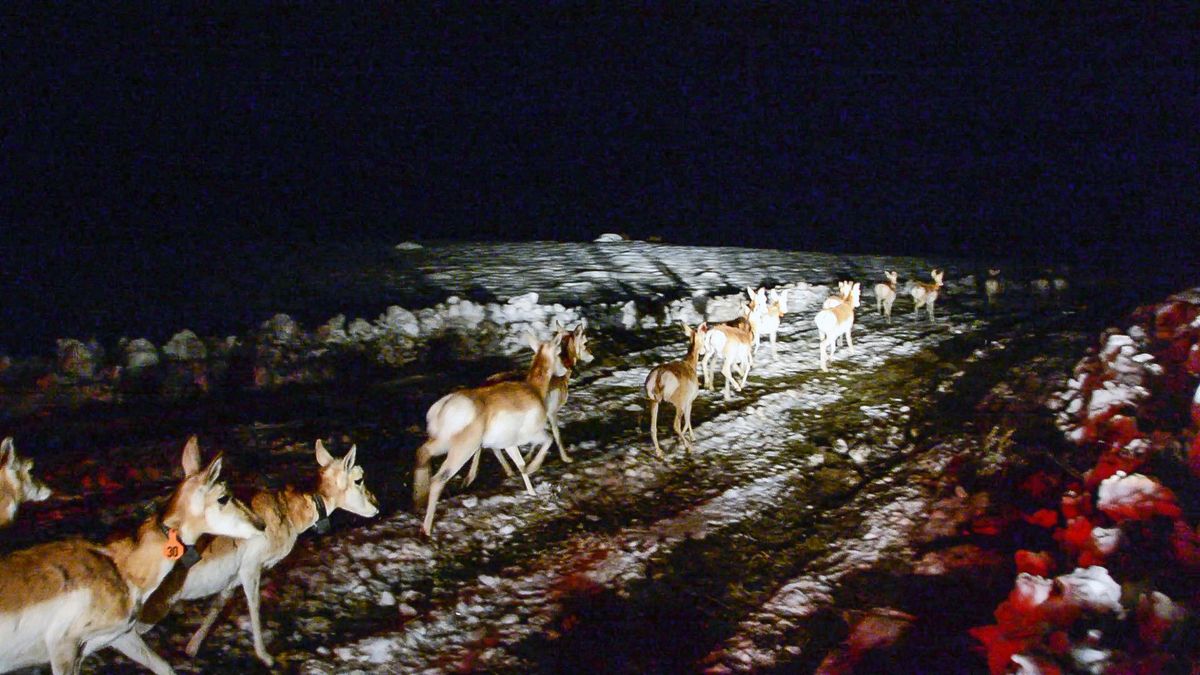Pronghorn reintroduced to north-central Washington

The Colville Confederated Tribes are reintroducing pronghorn on their reservation, restoring a missing piece to the sagebrush-covered landscape north of the Columbia River.
Fifty-two pronghorn were captured in northern Nevada last week through an agreement with state wildlife officials there. After being checked for disease and outfitted with radio collars, the animals were trucked to tribal lands north of Bridgeport, Washington, and released at dawn Friday.
Adults and fawns emerged cautiously from the trailers after the 14-hour drive, milling around as they checked out their new surroundings. But in the future, wildlife biologists expect to see them streaking across the shrub-steppe landscape. Pronghorn are North America’s fastest animal, with the ability to accelerate from zero to 40 mph within seconds.
Pronghorn are native to Central Washington but were hunted to extinction in the state in the early 1900s. Restoring the herd has cultural as well as ecological benefits, said Randall Friedlander, the tribe’s fish and wildlife director.
“Some of our history talks about pronghorn, and their bones have been found in archeological sites,” Friedlander said.
As the herd grows, there may be opportunities for subsistence hunting, he said.
The Yakama Nation also has a pronghorn herd, which was re-established five years ago. That herd has spread, and the Washington Department of Fish and Wildlife occasionally gets reports of pronghorn sightings as far east as the Tri-Cities.
Pronghorn have chunky bodies and long, delicate legs. They’re sometimes referred to as antelope, though they’re actually distant relatives of the deer family.
Their speed is an adaptation from a pre-Ice Age existence, when the pronghorn outran fearsome predators that roamed the continent’s grasslands – American cheetahs, wild dogs and fleet-footed bears.
Eric Krausz, the tribe’s big game specialist, has watched herds of pronghorns racing together, their movements as coordinated as a flock of birds or a school of fish.
“They’re a remnant species that was able to outrun its predators, and that trait has persisted through time,” he said. “I think that people will be excited and happy to see them back on the landscape.”
The tribe’s pronghorn reintroduction efforts started more than a decade ago, when biologists determined that the southwest part of the reservation would support a herd. The animals require a sagebrush habitat, with native grasses and water sources. And they need room to roam.
Pronghorn don’t compete directly with elk, deer or moose, said Richard Whitney, the tribe’s wildlife manager. They do use some of the same habitat as mule deer, but their diets are different, he said.
After tribal biologists identified suitable habitat, they started looking for a donor herd. The northern Nevada herd was chosen because it doesn’t migrate long distances, which some other herds are known for, Krausz said.
Forty of the pronghorns were outfitted with radio collars before they were released, which will help track their movements and survival rates over the next four years.
Tribal biologists are eager to study how pronghorn will change the landscape over time. “Everything has its place and its effect on the ecosystem,” Krausz said.
Pronghorn fawns will become prey for coyote, cougar and golden eagle populations, he said.
The adults will shape their surroundings through their grazing habits, influencing what plants grow on the shrub-steppe. The result will be a healthier, more resilient landscape, said Whitney, the wildlife manager.
“When you restore a native species, you’re replacing pieces that are missing,” he said.